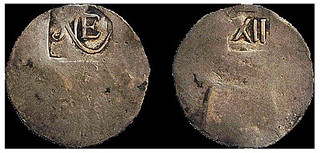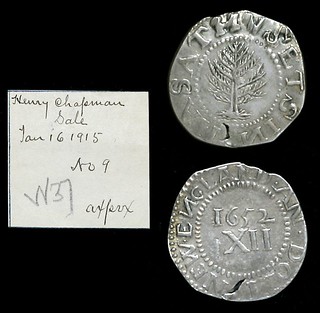
PREV ARTICLE
NEXT ARTICLE
FULL ISSUE
PREV FULL ISSUE
THE DAVID SUNDMAN MASSACHUSETTS SILVER COLLECTION
NBS Treasurer David Sundman is parting with his collection of Massachusetts silver coinage. Here's an excerpt from an article by Paul Gilkes in the October 28, 2013 issue of Coin World. The collection is well pedigreed and the article discusses the books and catalogs the coins once graced. Nice collection!
-Editor
Sundman, the president of Littleton Coin Co. in Littleton, N.H., finds that to be true in all areas of his numismatic collecting. His interests, among other areas, include ancient Greek and Roman silver and gold coins, New Hampshire Colonial and national bank notes, and Massachusetts silver coins. He also augments his collections with vintage numismatic literature to match his collecting interests. Sundman has decided to bid farewell, however, to his 18-piece collection of Massachusetts silver coins — comprising all major types — to pursue other numismatic collecting interests. “It’s hard to let things go,” Sundman said in an Oct. 2 telephone interview. “I have so many things that I like to collect. My problem is I like everything. I’m a generalist in most areas of my collecting. I’m attracted to coins with a story. I try to collect in areas that I won’t be competing with my customers.” Stack’s Bowers Galleries will offer Sundman’s Massachusetts silver coins as part of its Nov. 6 to 9 auction held in conjunction with the Whitman Expo in Baltimore. While not often the finest known for their types, the coins Sundman acquired were the best available. “This stuff doesn’t trade that often,” Sundman said. “Color is very important. They look the way they should look, with even gray toning. I tried to get the major types in pretty nice condition. I didn’t necessarily get the best, but the best available.” Growing up in the hobby with Littleton Coin Co., which his father, the late F. Maynard Sundman, founded in 1945, David Sundman said he was well aware of the Massachusetts silver series at a young age. “It’s imprinted on your brain if you’re from New England,” Sundman said, noting he was intrigued by each coin’s imagery illustrated in A Guide Book of United States Coins. “I appreciate antiquities and the different conditions under which each was produced.” A number of pieces in Sundman’s collection have served as plate coins in A Guide Book of United States Coins by R.S. Yeoman; in the 1943 monograph, The New England and Oak Tree Coinage of Massachusetts by Sydney P. Noe; in Q. David Bowers’ 2009 Whitman Encyclopedia of Colonial and Early American Coins; and in the 2010 reference, The Silver Coins of Massachusetts by Christopher J. Salmon. Sundman’s Willow Tree shilling sports an even more extensive pedigree. The shilling is plated in the 1859 American Numismatical Manual by Montroville W. Dickeson. It also graced the collections of Jeremiah Colburn (before 1860), Charles I. Bushnell, Lorin Parmelee, John Mills, George Earle, George Parsons, Henry Chapman, Newcomer and Boyd, before Ford. “The fact that it can be plate matched to a book in the pre-photographic area makes it one of the longest provenanced of all American coins,” according to early American coin specialist John Kraljevich Jr. Sundman’s collection spans the Massachusetts silver series from the undated NE (New England) coinage of 1652, continuing through the Willow Tree coins, followed by the Oak Tree coins and then the Pine Tree issues. To read the complete article, see: Sundman Massachusetts silver to be in sale (www.coinworld.com/articles/sundman-massachusetts-silver-to-be-in-sale)
 David followed up with some additional background on the collection for E-Sylum readers. Thanks! Here he is examining the collection before its sale.
-Editor
David followed up with some additional background on the collection for E-Sylum readers. Thanks! Here he is examining the collection before its sale.
-Editor
I have a lot of “favorites” in the 18 coin collection. In addition to the NE shilling described in the CW article, I really treasure the “Willow Tree shilling” that belonged to Jeremiah Colburn of Boston in 1860, when he loaned to Dr. Montroville W. Dickeson for the latter’s revised 1860 edition of his American Numismatical Manual. There it appeared as No. 2 on Plate XX, and Dickeson referred to it as an “Oak Tree Shilling,” but the coin’s outline and design is clearly my coin. (Plate XX was not in the 1859 edition of the book.)
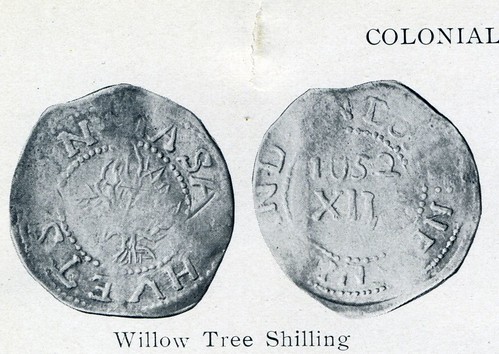
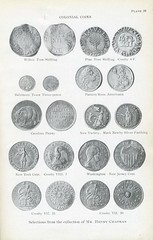
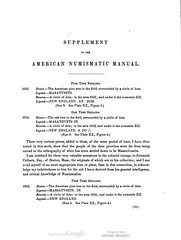
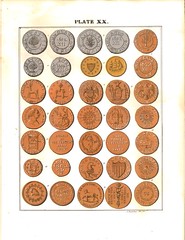
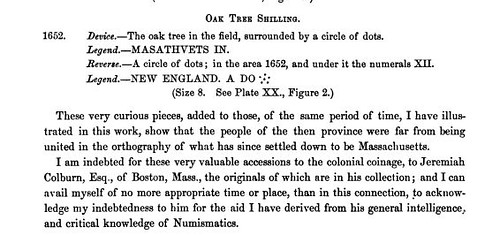
I enjoyed finding my Willow Tree illustrated on plate 39 in the ANS 1914 Exhibition catalogue which I’m lucky to have in my library. The October 2005 Ford Sale lot description for the coin went on to describe the coin’s importance as ….” One of perhaps four known American coins outside the Mint Coll. which can be traced back to 1860 or before, the others being the Abbey cent, Stickney dollar, and 1792 Peter Getz $ 1/2 with the chisel mark” which the Paul Gilkes article references with John Kraljevich’s comment on the coin’s importance . Thanks to Google Books, E-Sylum readers can read of the 1914 ANS exhibition in New York in the ANS proceedings of February 21, 1914. This was a magnificent exhibition of U.S. and Colonial rarities—unprecedented at the time. Over 5,000 coins were exhibited and in the one month they were on display some 2,408 visitors hardy souls braved heavy snow storms and bad weather to see the exhibit.
This sale was rated by John Adams as “A-“, and Adams went on to mention “Choice Mass. Silver plus many rare colonials…” in his book, United States Numismatic Literature, Volume 1. This Noe-10 was in the Hain Family Collection sale, Stack’s, Jan 15, 2002 as lot 124. In the upcoming November Stack’s Bowers sale of my collection this is described as “1652 Massachusetts Bay Colony Pine Tree Shilling. Large Planchet. Noe-10, Salmon 8-Diii, W-750. Rarity-3. Without Pellets at Trunk. AU-55 (PCGS). Secure Holder.”
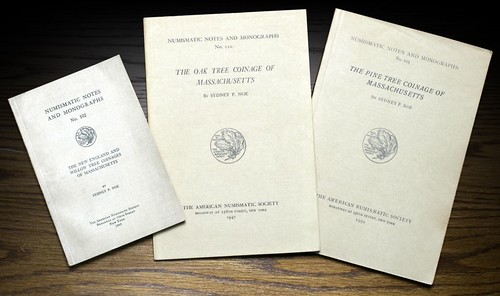
I think collecting and studying and conversing with other collectors about the objects we collect keeps us young. I hope to be collecting and dealing in coins and paper money for a long time to come. Putting together this collection, researching and exhibiting it in Boston at the 2010 ANA ‘World’s Fair of Money’ convention was a lot of fun. Now it’s time to let them go to other U.S. Colonial coin collectors.
To read the 1914 ANS exhibition catalog at Google Books:
American Journal of Numismatics, Volumes 47-48
The Numismatic Bibliomania Society is a non-profit organization promoting numismatic literature. See our web site at coinbooks.org. To submit items for publication in The E-Sylum, write to the Editor at this address: whomren@gmail.com To subscribe go to: https://my.binhost.com/lists/listinfo/esylum All Rights Reserved. NBS Home Page Contact the NBS webmaster 
|
